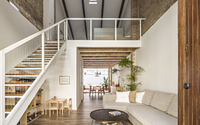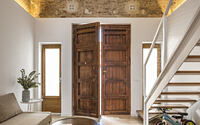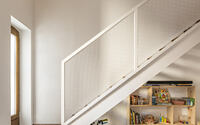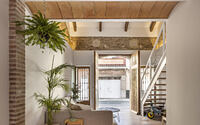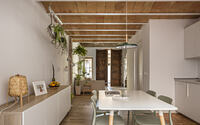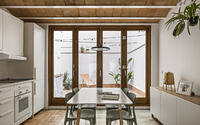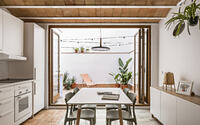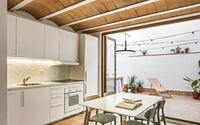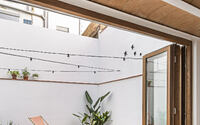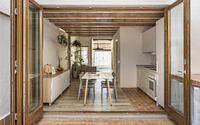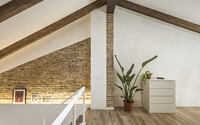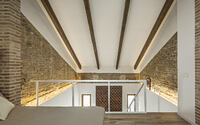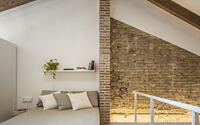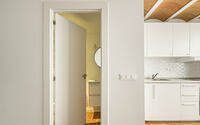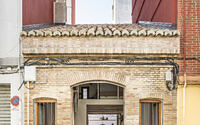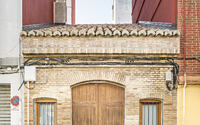Casa Cabanyal by Nodopía Arquitectura y Diseño
Casa Cabanyal is a terraced family house located in Valencia, Spain, completely renovated in 2020 by Nodopía Arquitectura y Diseño.













Description
‘Casa Cabanyal’ is a terraced family house located in one of the neighbourhoods with the most personality in Valencia, El Cabanyal. This neighbourhood has its own architecture that differentiates it from the rest of the city. The comprehensive renovation and interior design proposed in this project seek to respect and enhance its intrinsic character while providing spatiality and luminosity to the house. Therefore, one of the starting criteria was to conserve the existing materials and maintain the spirit of the traditional architecture of this neighbourhood in the choice of new materials. The clear protagonists are the wooden entrance door, which is recovered, and the original brick that surrounds the space and that stands out thanks to the indirect lighting incorporated in the project. The new materials, the clay vaults and paving, the wooden carpentry and the coloured tile, reminiscent of the neighbourhood’s colourful facades, harmonize with the original materials.
The axis of the proposal for the new distribution is based on maximizing the spatiality and luminosity of the house. To do this, special work has been done on expanding the visual limits of the space, creating a double fugue. On the one hand, a double height is generated in the living room and, on the other, the view towards the patio is released, giving the house spaciousness and blurring the boundary between inside and outside. This line is diluted thanks to the folding four-leaf carpentry that allows the interior space to be completely opened to the courtyard, turning the dining and kitchen area into an outdoor porch.
The courtyard is the heart of the house, through which the house expands and breathes. The floor is covered with the same clay tile used inside the house and, with it, a support piece is also built that serves as a washing and cooking area. The white walls reflect the light increasing the luminosity of the interior space of the house.
The renovation of this house also includes its energy rehabilitation, incorporating different bioclimatic and passive strategies. Continuous thermal insulation has been incorporated both on the roof and on the facades, but respecting existing elements such as the exposed brick facade. The courtyard façade has been solved with an exterior thermal insulation composite system (ETICS) and the new windows are made of wood carpentry, with Low-E and solar control glass on the south façade. To avoid rising damp, very common in this type of house on the ground floor, and to thermally isolate the interior space, the floor has been raised with a sanitary floor. In summer, the roof window allows cross ventilation of the house by dissipating the heat that accumulates in the upper part of the space. In the courtyard, a retractable awning is installed to protect this space and the large folding window from the sun.
Photography by Germán Cabo
Visit Nodopía Arquitectura y Diseño
- by Matt Watts